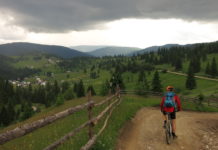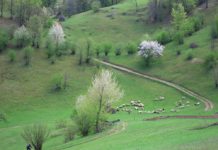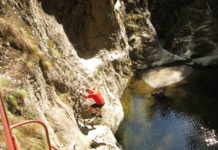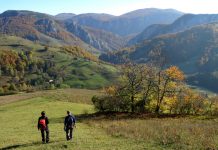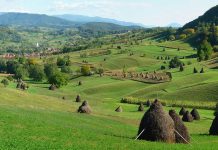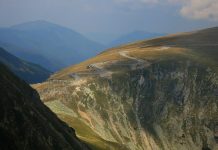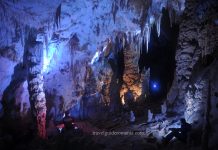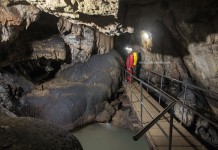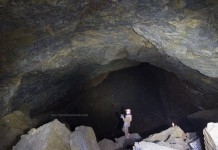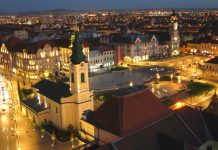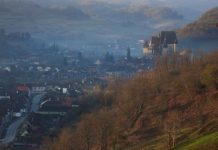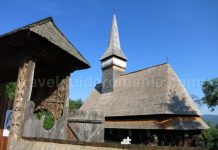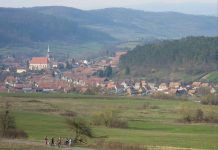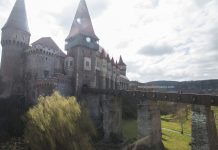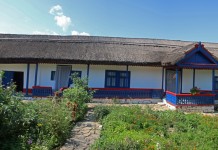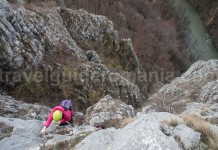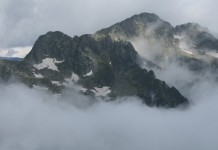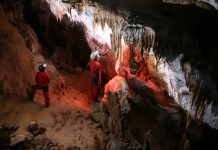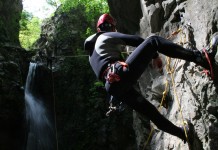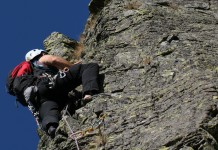The world’s second largest administrative building is The Palace of the Parliament (or The People’s House) in Bucharest.
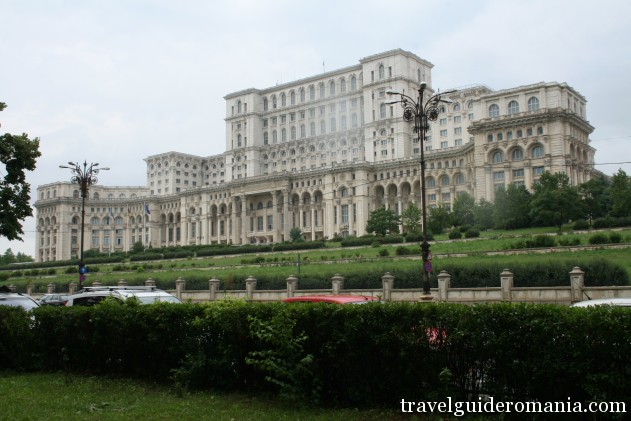
The Palace of Parliament measures 330,000 m2 (~3,550,000 sq ft) and is regarded as former dictator’s, Nicolae Ceaușescu, most cherished jewel. By definition is one of the most significant sightseeing objectives in Bucharest, the capital of Romania.

At the border of reason, kitsch and neoclassicism, the building reflects best what Romania underwent in the communist period. Built in a time when the people of Romania have been destitute, it has been regarded with reticence.
Many workers have lost their lives on the site in their attempt to contribute to the construction of this architectural colossus – the world’s second largest administrative building after the Pentagon.
It was named The People’s House, because it was built by the folk (and by no means for the folk). It seems that 20,000 workers have worked on the site, in all three work shifts, and no less than 700 specialists in design and architecture.

Access: the building is situated in the 5th administrative sector, between Izvor St. (west and northwest), Națiunile Unite Bd. (north), Libertății Bd. (east) and 13 Septembrie St. (south).

If you decide to come by subway, Travel Guide Romania recommends that you get off at Unirii Station, so that you admire the entire urban ensemble of Unirii Bld. – The People’s House.
The view of the building, seen from the boulevard has definitely fulfilled its purpose of showing the full splendor and grandeur of the communist regime, expressed through the medium of architecture.

If you come by car, we recommend that you park it in the parking lot near Unirii Bd., due to its myriad of parking spots, or you can drive on the floor of The People’s House.
On arriving in front of The Palace of the Parliament, you ought to enter coming from Izvor St. If you want to visit the building, you will find a gate entrance a bit further down the road.

Frankly speaking, it is important to mention that the access isn’t well-signaled, so we recommend that you ask one of the guards near the gate about the tourists’ visiting area.
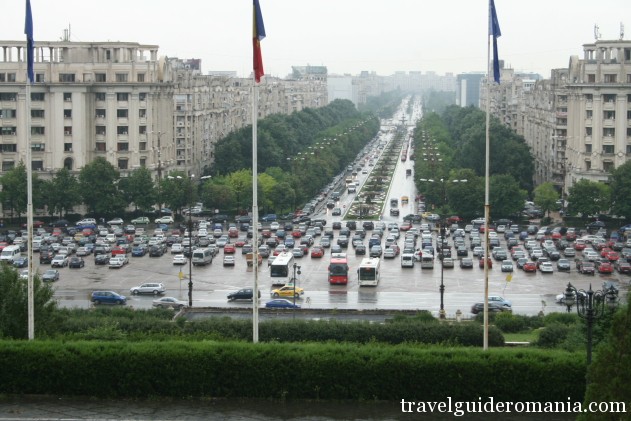
Buying tickets: due to great flow of tourists we suggest that you book the tickets a day earlier by phone at the appointed hours. It is important as well to mention if you want an English-speaking guide.

You can buy different tickets that allow you to visit a certain number of chambers, the basement and the main balcony.
Prices: the prices range between 25-45 lei (€5-10), depending on the ticket.
For children, pupils and students (that have their student’s card stamped as proof) the entrance is free.

Suggestion: in order to take pictures inside the building you have to pay 30 lei. We suggest that you pay the fee, since the luxuriously decorated chambers will fully pay off this investment.

Advice: on entering the hallway, you will encounter a small souvenir stall. Like every souvenir stall in a sightseeing building, it is important to know that the prices are rather expensive. If you desire to buy souvenirs from Romania, we suggest finding other shops near the Old City Center.
Don’t forget to have your ID card or passport on you, in order to be identified for access.
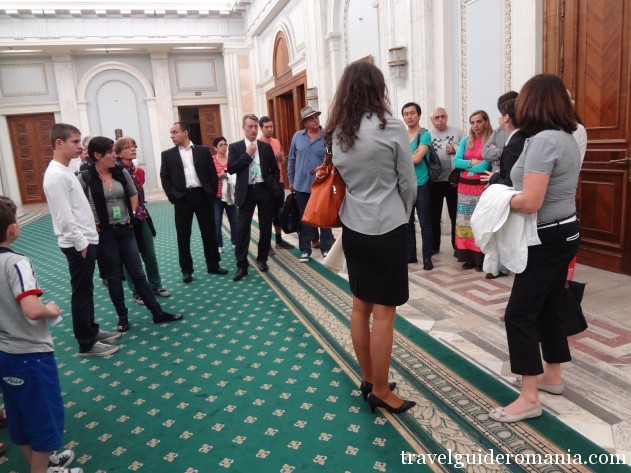
Visiting hours: it is opened for the public between 10 and 16 (10 a.m. – 4 p.m.).
Last tour starts at 15:30 (3.30 p.m.).

If we were to suggest one building, this would be at the forefront. It is the building that needed the most extensive demolishing in the history of our country.
Brief history: under the false pretext of the 77’s earthquake, about 7 km (~4.3 miles) worth of buildings from the Old City Center have been demolished. 44,000 people have been relocated. A series of important buildings have been demolished, without any care of the patrimony or their architectural value.

After a 4-year contest, the Ceaușescus have chosen professor Lăzărescu for this project as main architect and project director. He was replaced by a 28-year old female architect, Anca Petrescu. Because she was born in the countryside, she was more loved by the Ceaușescus.
The final project for the Palace of Parliament is consisted to be an amalgam of a lot of other projects. All the projects had a common factor: the size.
The architectural ensemble came to influence 60 hectares (~150 acres) of Bucharest’s area. Some of the old churches have been literally moved behind the apartment buildings that can be seen along the Unirii Boulevard.

If you find yourself walking in the area, you will be rewarded by the experience of imagining what Bucharest could have been today – “The Little Paris.”

Construction: the Palace of Parliament measures 276 m (905 ft) by 227 m (744 ft) and it started in 1983. It was estimating that by the end of 1990 it will have been finished. It is 86 m (282 ft) high, and 92 m (302 ft) deep. It has 12 floors above ground and another 8 underground.
In 1989, the Revolution led to the eradication of the communist regime, and the Ceaușescus never got to use the gigantic building for themselves.
It was not finished at the estimated time. Some details have been done by 2006, when the estimated value of the construction peaked 6 billion Euro.

There are 1,000 chambers decorated with marble (1,000,000 m3) and wood (900,000 m3). Many carpets and mats have been made inside, due to the fact that they were too heavy to be carried inside.
Visiting course: the course aimed for the public contains a series of chambers and hallways magnificently decorated, among others:
13th of September Entrance hosts the most magnificent staircase in the Palace, inspired by The Winter Palace’s staircase in Sankt Petersburg

Human Rights Chamber is decorated with oak tree and has the second largest/heaviest chandelier in the Palace, weighing 2 tons. For repairing the chandelier, another access chamber has been built from above the ceiling.
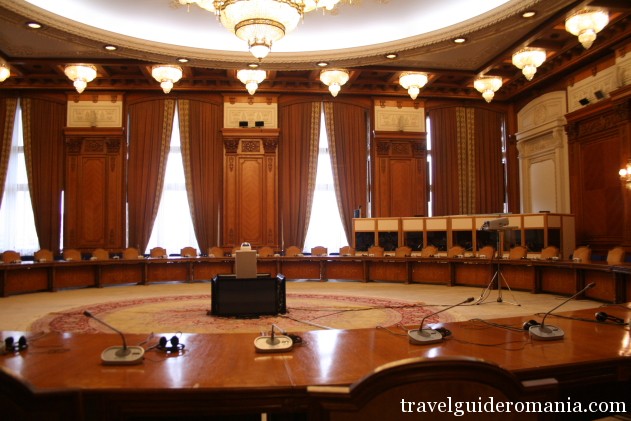
Alexandru Ioan Cuza Chamber is one of the most important and towering chamber of the Palace. Has 20 m (65 ft) high and a surface of 2040 m2 (~22,000 sq ft).
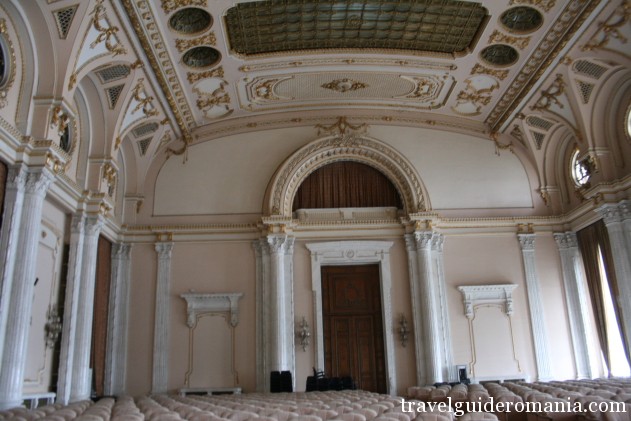
The Balcony facing Piața Unirii – there is access from the Alexandru Ioan Cuza Chamber. A 5 to 10-minute break is necessary to fully observe the architectural ensemble: The People’s House and the Socialist Victoria Bd. This is the former name of the boulevard during the communist period.

All chambers have been decorated with mouldings, some of which are made out of gold. They also put monumental statues, embellished marble floors from Ruschita, indented ceilings, brocades and tapestries.
Since 2004, the Palace of Parliament hosts the Senate and The Chamber of Deputies. In attempt to introduce other functions to the disused area they wanted to refresh the dictatorial atmosphere of the building that was inherited from the communist period.

Pentru versiunea in limba romana


